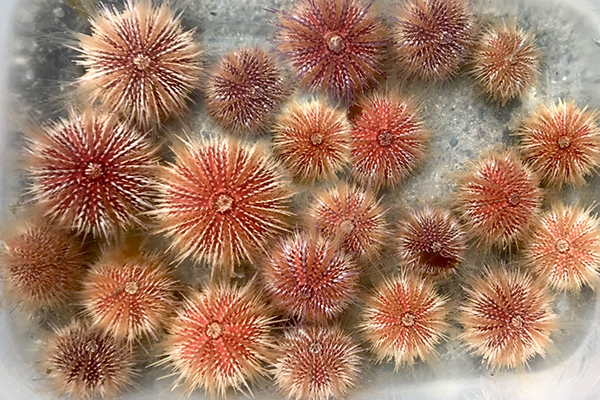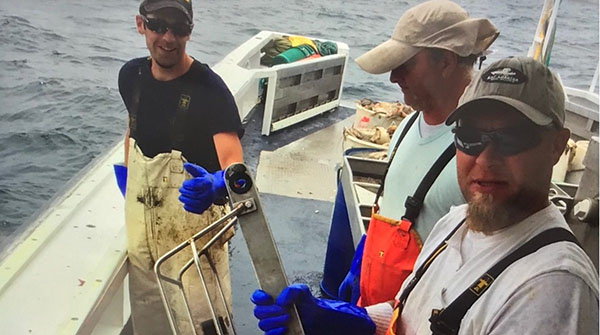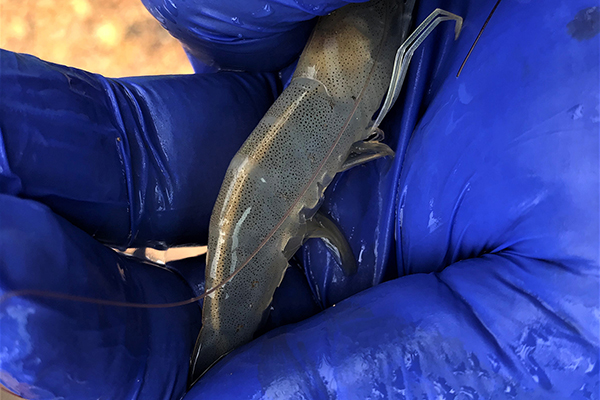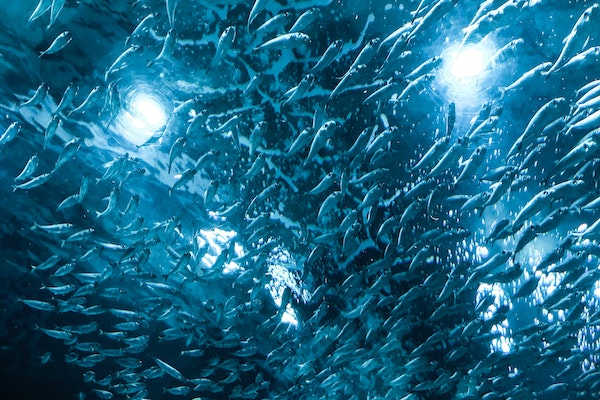Sea urchins deteriorated physically when immersed in less salty water – a risk that could occur with climate change

Sea urchins exposed to diluted seawater for long periods show signs of physical deterioration, concludes a new study from the British Antarctic Survey, the University of Cambridge and the Scottish Association for Marine Science. The study, published in the Journal of Experimental Biology, also found that even slight changes in salinity – or saltiness – trigger changes in urchin behavior as they try to cope with their new conditions.
“Coastal waters are predicted to freshen as climate changes because of increased rainfall and glacial melting, and salinity is one of the main factors impacting the physiology and ecology of marine life,” said Nicholas Barrett, a Ph.D. student at the British Antarctic Survey and the Department of Earth Sciences at the University of Cambridge.
As the climate warms, Britain’s weather is becoming more extreme. In Scotland, precipitation has increased by 20 percent since the 1960s. Salinity is one of the critical environmental factors that affect the biology of marine organisms, with increased rainfall and glacial melting reducing the salinity of coastal waters. Urchins are slow-moving bottom feeders, making them especially vulnerable to rapid changes to their habitat.
The researchers exposed European sea urchins at the Scottish Association for Marine Science in Oban to conditions mimicking those that could occur under future climate scenarios, with salinity ranging from 31 parts salt per thousand (‰) – that of ambient seawater – to a more extreme scenario dropping to 11‰.
Over an initial 24-hour period, and later for 25 days, the team measured how much oxygen the creatures consumed, how quickly they fed and their ability to flip themselves over if they toppled.
In the mid-salinity water, the scientists observed changes in behavior, but the sea urchins showed clear signs of adjustments and tolerance, indicating they could survive long-term at this level if conditions change in the environment.
But immersed in less salty water – around 21‰ – the urchins’ physical condition deteriorated: they became sluggish, eating less and breathing more rapidly. They lost spines and body mass, and their tube feet discolored, indicating severe stress.
“Though it was heartening to see the sea urchins successfully adjust to some reduction in salinity, further reductions had a dramatic impact on the animal’s health, suggesting their long-term survival could be severely compromised,” said Barrett. “This urchin species plays a crucial role in controlling the growth of various large kelp seaweeds. Its disappearance could therefore upset the delicate balance of coastal ecosystems.”
Controlled salinity experiments like these differ from the natural acclimatization process that urchins may exhibit in the wild but this research offers a clearer prediction of how this species may fair under future heavy rainfall induced by climate change.
Now that you've reached the end of the article ...
… please consider supporting GSA’s mission to advance responsible seafood practices through education, advocacy and third-party assurances. The Advocate aims to document the evolution of responsible seafood practices and share the expansive knowledge of our vast network of contributors.
By becoming a Global Seafood Alliance member, you’re ensuring that all of the pre-competitive work we do through member benefits, resources and events can continue. Individual membership costs just $50 a year.
Not a GSA member? Join us.
Author
Related Posts

Responsibility
Are mid-depth waters off the United States East Coast getting saltier from ocean warming?
A new study indicates that mid-depth waters off the United States East Coast are getting saltier, possibly due to ocean warming caused by climate change.

Health & Welfare
How salinity levels impact EHP infection rates in Pacific white shrimp
An EHP infection can occur at a salinity as low as 2 ppt but the prevalence and the severity of the EHP infection is higher at 30 ppt salinity.

Responsibility
High ocean temperatures helped make 2023 the hottest year ever recorded
A new study found ocean temperatures were “off-the-chart” in 2023, causing more intense weather patterns and impacting marine life.

Responsibility
Study: Global warming above 2 degrees-C will lead to ‘irreversible loss in marine ecosystem habitability’
CSIRO determines that global warming above 2 degrees-C will decrease viable ocean habitats and will affect fishing grounds and productivity.



